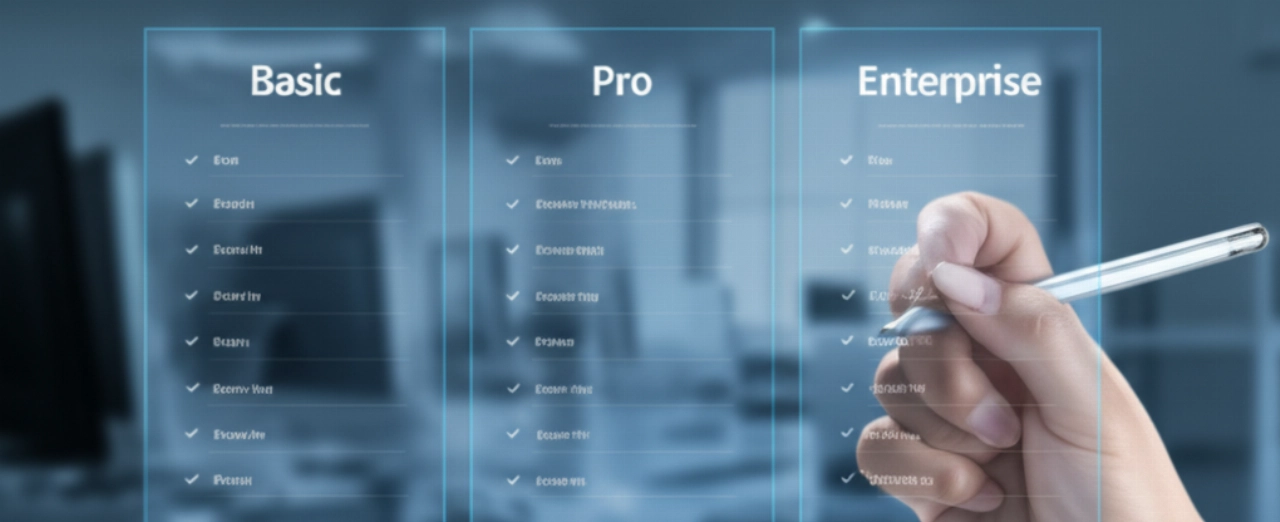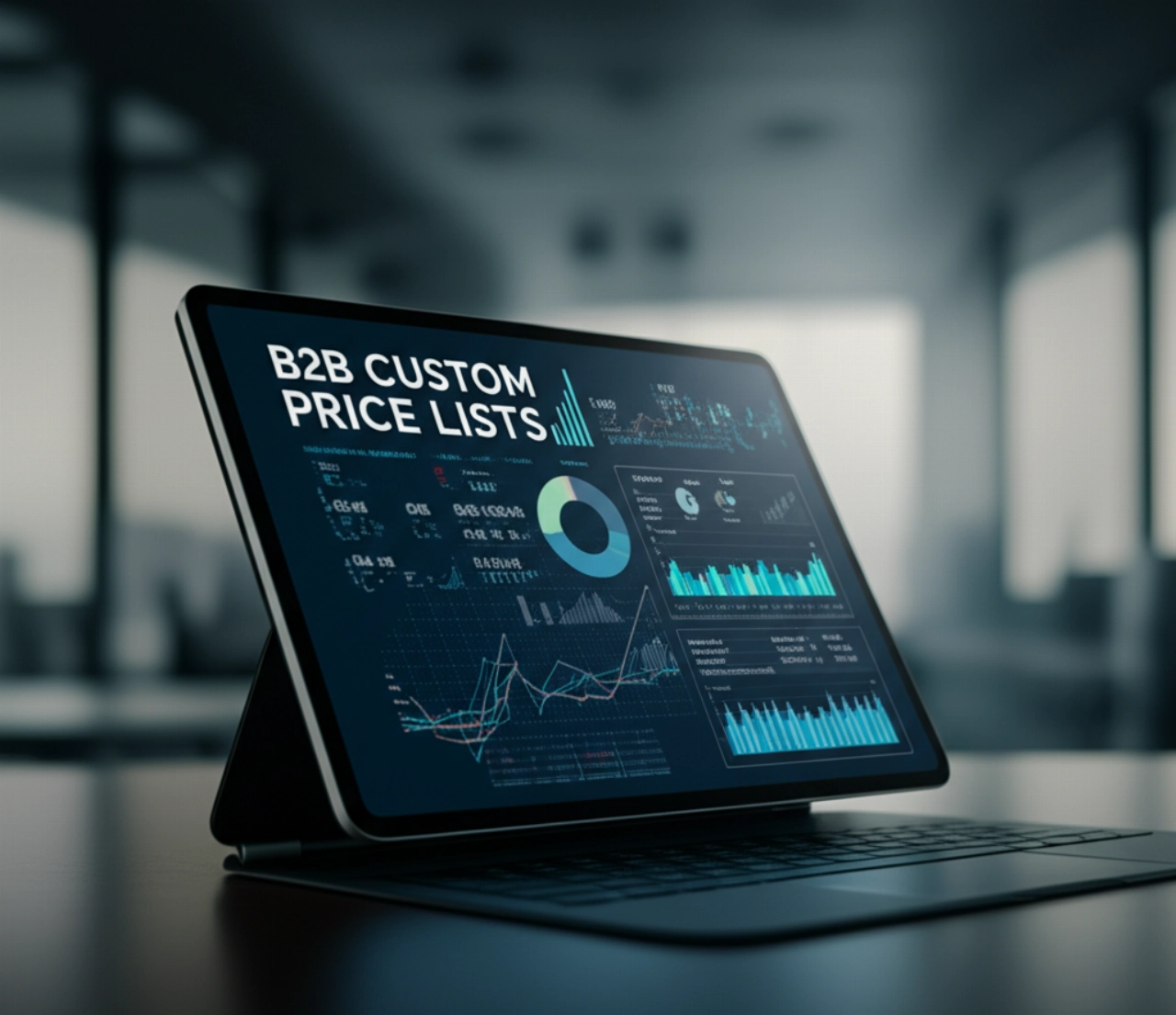For enterprise leaders, the phrase professional ecommerce website pricing often triggers a mix of apprehension and strategic calculation. Is it an unavoidable cost center, or a pivotal investment in your company's future? At Commerce-K.com, we understand this isn't about buying a 'website'; it's about engineering a resilient, scalable, and profitable digital commerce engine that drives market share and competitive advantage.
Many organizations grapple with the scalability ceiling of their current platforms, the operational nightmare of integration hell, or the looming fear of a failed migration. They've experienced the frustration of the 'one-size-fits-all' trap and the anxiety of a performance bottleneck. This article will demystify the true nature of professional ecommerce website pricing, transforming it from a line item into a strategic blueprint for sustained growth.
We promise to equip you with the insights needed to make an informed investment, ensuring your digital commerce platform becomes a powerful asset, not a perpetual source of technical debt. This is your roadmap to understanding the value, not just the cost.

Beyond the Price Tag: Why Professional Ecommerce Website Pricing is a Strategic Investment
In the enterprise realm, professional ecommerce website pricing isn't merely a transactional cost; it's the capital expenditure for your next decade of digital growth. Viewing it as anything less is to fundamentally misunderstand its role in your Total Cost of Ownership (TCO) and long-term Return on Investment (ROI).
A truly professional e-commerce platform is the central nervous system of your digital operations. It's the engine that connects your ERP, PIM, CRM, and WMS, automating workflows, personalizing customer experiences, and providing real-time data for strategic decisions. When you invest in a robust, custom-tailored solution, you're not just paying for code; you're investing in:
- Unrivaled Scalability: The capacity to handle exponential traffic, product catalogs, and transaction volumes without buckling.
- Seamless Integration: Eliminating manual data entry and ensuring a single source of truth across your enterprise systems.
- Operational Efficiency: Streamlining B2B workflows, complex pricing rules, and order fulfillment.
- Competitive Moat: Building unique features and customer experiences that your competitors cannot easily replicate.
- Future-Proofing: Adopting composable commerce principles that allow for agile adaptation to market shifts and technological advancements.
The initial investment in professional ecommerce website pricing is a down payment on reduced operational costs, increased conversion rates, expanded market reach, and ultimately, a stronger bottom line. It's about building enterprise resilience.

Deconstructing the Investment: Key Factors Influencing Professional Ecommerce Website Pricing
Understanding the components of professional ecommerce website pricing is crucial for accurate budgeting and effective vendor evaluation. It's rarely a single figure but a sum of strategic decisions and technical complexities. Here are the primary factors:
1. Discovery & Strategy Phase
- What it is: In-depth workshops, requirements gathering, competitor analysis, technical audits, and strategic roadmap development.
- Why it matters: This foundational phase de-risks the entire project, ensuring alignment with business goals and preventing costly reworks later. It's where we define your unique needs, from complex B2B workflows to specific integration requirements.
2. Platform Licensing & Infrastructure
- What it is: Costs associated with the chosen platform (e.g., Magento Commerce, Shopify Plus, commercetools, BigCommerce Enterprise), hosting, CDN, and security measures.
- Why it matters: Enterprise-grade platforms offer advanced features, security, and support that basic SaaS plans lack, directly impacting scalability and performance.
3. Customization & Feature Development
- What it is: Tailoring the platform to your unique business logic, complex pricing models, product configurators, custom checkout flows, and specialized B2B functionalities.
- Why it matters: This is where your competitive advantage is engineered. Generic solutions often fall short, forcing compromises that hinder growth and efficiency.
4. Integrations
- What it is: Connecting your e-commerce platform with critical enterprise systems like ERP (SAP, Oracle), PIM, CRM (Salesforce), WMS, payment gateways, and shipping providers.
- Why it matters: Seamless data flow eliminates manual processes, reduces errors, and provides a unified view of your customer and operations. This is often the most complex and critical component, directly impacting operational efficiency and data integrity.
5. Data Migration
- What it is: Securely transferring product catalogs, customer data, order history, and other critical information from your legacy system to the new platform.
- Why it matters: A meticulous migration prevents data loss, ensures SEO continuity, and maintains business operations without interruption. This is a common point of failure in poorly managed projects.
6. Quality Assurance & Testing
- What it is: Rigorous testing across all functionalities, integrations, performance, and security before launch.
- Why it matters: Prevents costly post-launch issues, ensures a flawless user experience, and protects your brand reputation.
7. Training & Support
- What it is: Empowering your internal teams to manage and optimize the new platform, along with ongoing technical support and maintenance.
- Why it matters: Ensures long-term success and maximizes your investment by enabling your team to leverage the platform's full capabilities.
Each of these factors contributes significantly to the overall professional ecommerce website pricing, reflecting the depth of engineering, strategic planning, and specialized expertise required for enterprise-level success.

The Hidden Costs of "Cheap": Why Under-investing in Your Ecommerce Platform is a Business Liability
The allure of low-cost solutions for your digital commerce can be powerful, but for enterprise businesses, it's often a mirage leading to significant hidden costs and long-term liabilities. What appears to be a lower professional ecommerce website pricing upfront frequently balloons into a much higher Total Cost of Ownership (TCO) down the line.
Consider these common pitfalls of under-investment:
- The Scalability Ceiling: A cheap, off-the-shelf platform might handle current traffic, but will it buckle under peak sales periods or rapid growth? The cost of lost sales, frustrated customers, and emergency replatforming far outweighs initial savings.
- Integration Hell: Opting for a platform that doesn't seamlessly integrate with your ERP, PIM, or CRM leads to manual data entry, errors, and operational bottlenecks. The cost? Increased labor, delayed fulfillment, and inaccurate reporting.
- The "One-Size-Fits-All" Trap: Basic SaaS platforms often lack the flexibility for complex B2B pricing, custom product configurators, or unique workflow automation. Forcing your business into a rigid template stifles innovation and competitive differentiation, leading to missed revenue opportunities.
- Performance Bottlenecks: A slow site kills conversions. Cheap hosting or poorly optimized code directly impacts user experience and SEO. The cost is measurable in abandoned carts and reduced organic visibility.
- Technical Debt Accumulation: Patchwork solutions and quick fixes create a mountain of technical debt, making future updates, integrations, and innovations exponentially more expensive and risky.
- The Failed Migration Terror: Attempting a complex migration with an inexperienced vendor to save costs can result in catastrophic data loss, SEO ranking drops, and extended downtime – a nightmare scenario for any enterprise.
Ultimately, under-investing in professional ecommerce website pricing isn't a cost-saving measure; it's a strategic misstep that compromises your ability to compete, scale, and innovate. It transforms your digital commerce from an asset into a liability.
Real-World ROI: How Strategic Investment Transformed a B2B Manufacturer's Digital Commerce
A leading industrial equipment manufacturer, generating €50M annually, faced significant challenges with their outdated e-commerce platform. It was a custom-built monolith, plagued by integration hell with their SAP ERP, slow performance, and an inability to handle complex B2B pricing and customer-specific catalogs. Their professional ecommerce website pricing had been minimal initially, leading to a decade of accumulating technical debt.
Commerce K partnered with them for a comprehensive replatforming to Magento Commerce. The strategic investment included:
- Deep Discovery: Mapping complex B2B buyer journeys and pricing logic.
- Robust SAP Integration: Building a custom, real-time integration layer for inventory, pricing, and order management.
- Performance Optimization: Implementing advanced caching and CDN strategies.
- Seamless Data Migration: Ensuring zero downtime and SEO continuity during the transition.
The result? Within 12 months post-launch:
- 40% Performance Boost: Page load times reduced significantly, improving user experience and SEO.
- 25% Increase in Online Orders: Driven by improved usability and B2B-specific features.
- 15% Reduction in Customer Service Inquiries: Due to self-service capabilities and accurate online information.
- Significant Reduction in Operational Costs: Automation of order processing and data synchronization.
This case exemplifies how a strategic, well-planned investment in professional ecommerce website pricing can yield substantial, measurable ROI, transforming a bottleneck into a growth engine.
Partnering for Profitability: The Commerce K Approach to Enterprise Ecommerce Investment
At Commerce K, we don't just quote professional ecommerce website pricing; we engineer a clear digital commerce roadmap designed for measurable results. We understand that for CTOs, E-commerce VPs, and CEOs, the decision isn't about cost, but about de-risking a multi-million dollar investment and ensuring a robust Return on Investment (ROI).
Our philosophy is built on transparency, deep technical expertise, and a relentless focus on your business outcomes. We address your core pain points head-on:
- Eliminating the Scalability Ceiling: We architect platforms built for future growth, not just current needs.
- Conquering Integration Hell: Our expertise in complex ERP, PIM, and CRM integrations ensures seamless data flow and operational efficiency.
- Guaranteeing a Successful Migration: Our proven methodology minimizes risk, preserves SEO, and ensures business continuity.
- Bypassing the "One-Size-Fits-All" Trap: We build custom solutions that fit your unique business processes and competitive differentiators.
- Optimizing for Performance: Speed and reliability are non-negotiable, ensuring maximum conversions and user satisfaction.
When you partner with Commerce K, you gain a strategic ally committed to transforming your complex e-commerce challenges into clear, scalable, and profitable growth engines. We provide the blueprint, the expertise, and the execution to ensure your investment in professional ecommerce website pricing delivers exceptional value.
Frequently Asked Questions about Professional Ecommerce Website Pricing
What is the typical ROI for a professional ecommerce website?
While specific ROI varies greatly by industry, business model, and the scope of the project, a well-executed professional e-commerce platform typically delivers ROI through increased sales (higher conversion rates, expanded reach), reduced operational costs (automation, efficiency), improved customer satisfaction, and enhanced data insights. We focus on measurable KPIs from day one to track and demonstrate your return.
How does integration complexity impact the overall professional ecommerce website pricing?
Integration complexity is often one of the most significant drivers of professional ecommerce website pricing. Connecting your e-commerce platform to critical systems like ERP, PIM, and CRM requires deep technical expertise, custom API development, and rigorous testing. The more disparate systems, the greater the data volume, and the more real-time the synchronization required, the higher the integration costs will be. However, this investment directly translates to operational efficiency and data accuracy.
Can we start small and scale up, or is a large upfront investment necessary?
While a strategic, comprehensive approach often yields the best long-term ROI, we can discuss phased implementations. For enterprise clients, however, a foundational investment in a robust, scalable architecture is usually necessary to avoid accumulating technical debt and facing costly replatforming down the line. We prioritize building a future-proof core that can be iteratively enhanced.
How do you ensure SEO continuity during a platform migration, and is that included in the pricing?
SEO continuity during migration is paramount and is a critical component of our project planning. Our process includes comprehensive URL mapping, 301 redirects, content migration strategies, technical SEO audits, and post-launch monitoring. These steps are integrated into the overall project scope and pricing, as preventing SEO loss is crucial for maintaining your organic traffic and revenue.
What ongoing costs should we anticipate beyond the initial professional ecommerce website pricing?
Beyond the initial development, ongoing costs typically include platform licensing fees, hosting and infrastructure (CDN, security), maintenance and support agreements, third-party application subscriptions, and continuous optimization and new feature development. We provide a clear breakdown of these anticipated recurring costs during our scoping phase, ensuring full transparency on your Total Cost of Ownership (TCO).
Your Strategic Investment in Digital Commerce Starts Here
You've navigated the complexities of professional ecommerce website pricing, understanding that it's not a mere expense but a strategic investment in your enterprise's future. The journey from technical confusion to strategic clarity is now complete. You know the pitfalls of under-investment and the immense ROI unlocked by a truly professional solution.
Perhaps you're thinking, "This sounds like a significant undertaking," or "Do we have the internal resources for this?" These are valid concerns. But the cost of inaction, of remaining trapped by a platform that limits your scalability, stifles innovation, and creates operational chaos, is far greater.
Stop navigating technical debt. Your business deserves a clear digital commerce roadmap that delivers measurable results. The first step isn't a quote; it's a no-obligation Scoping & Strategy Session with our senior architects. We'll help you map your potential and de-risk your investment. Click here, tell us about your project, and discover the opportunities you're currently missing. Start building your future-proof commerce engine today.
Now that you understand the strategic investment in your digital platform, discover how we execute a seamless ecommerce migration service. Or explore the benefits of a headless commerce architecture for ultimate flexibility.





